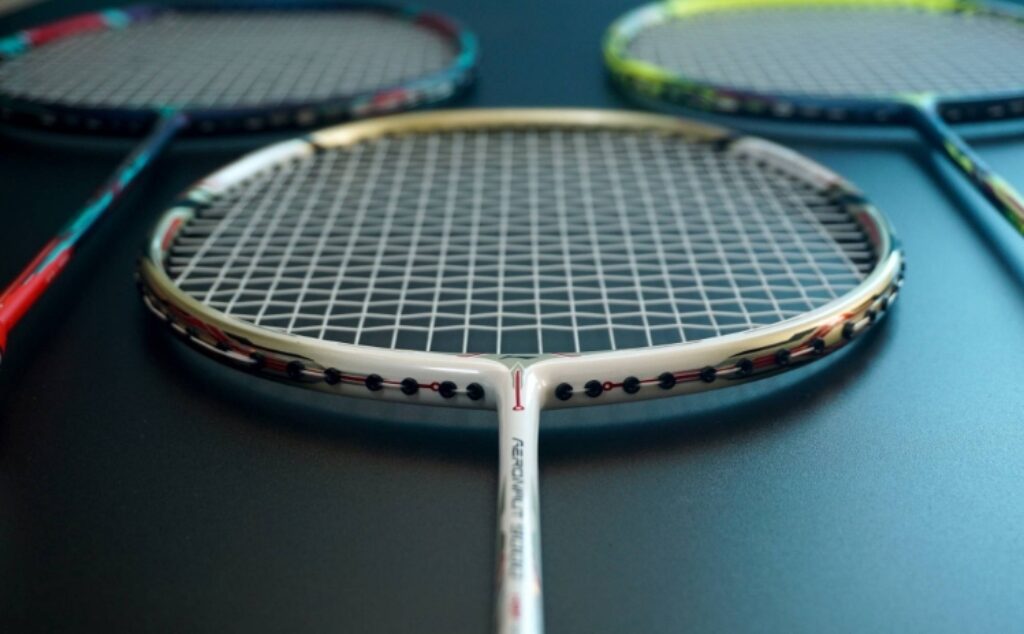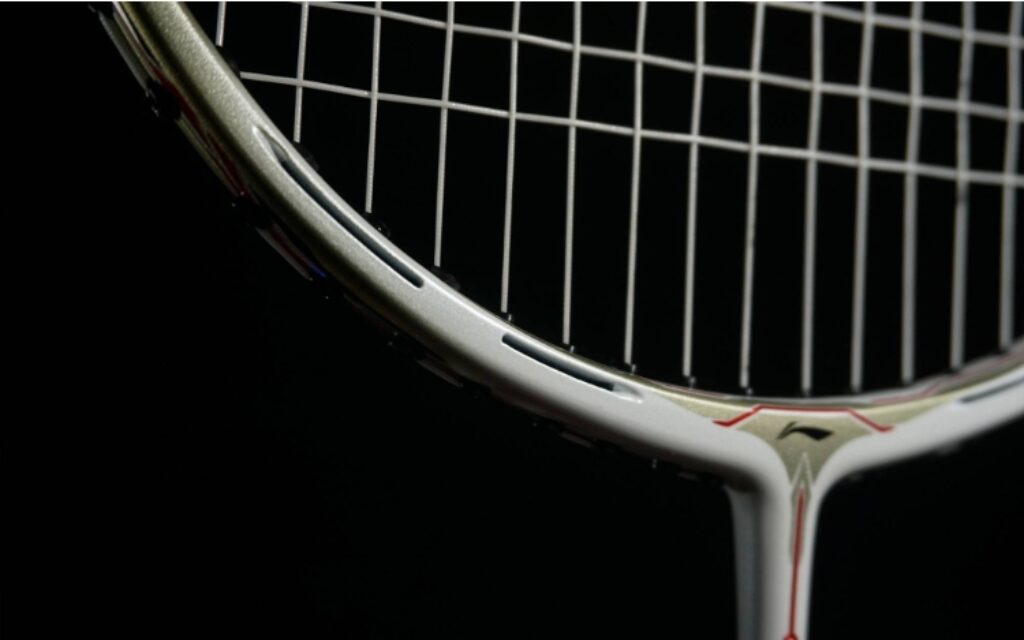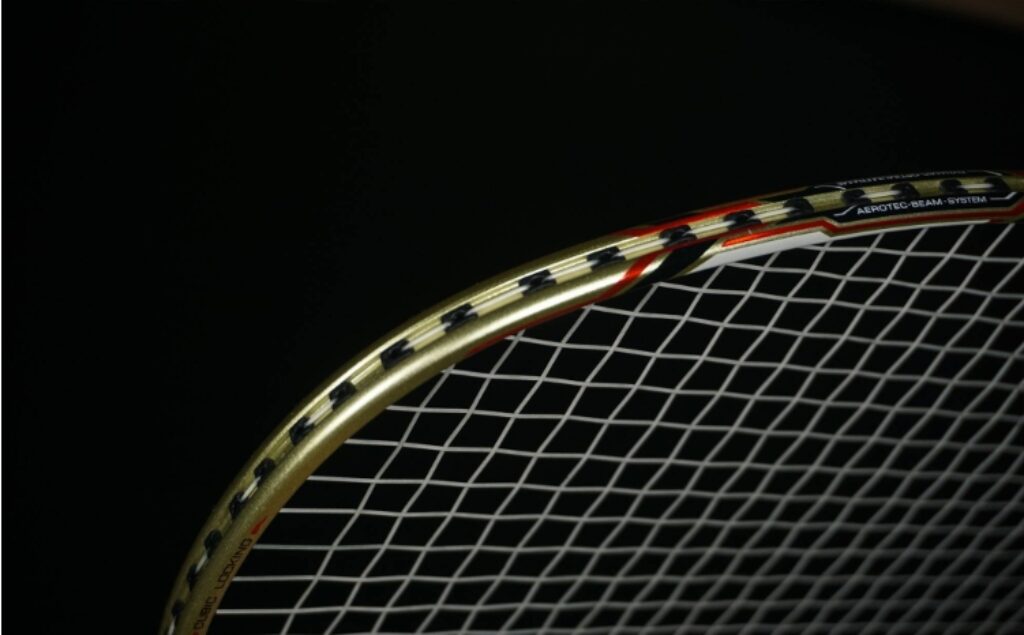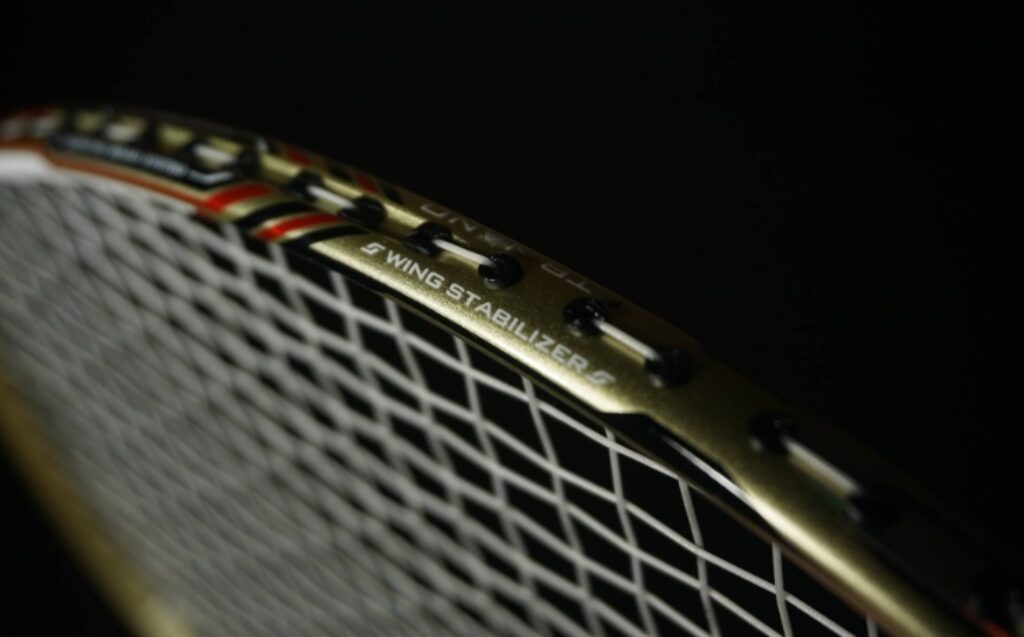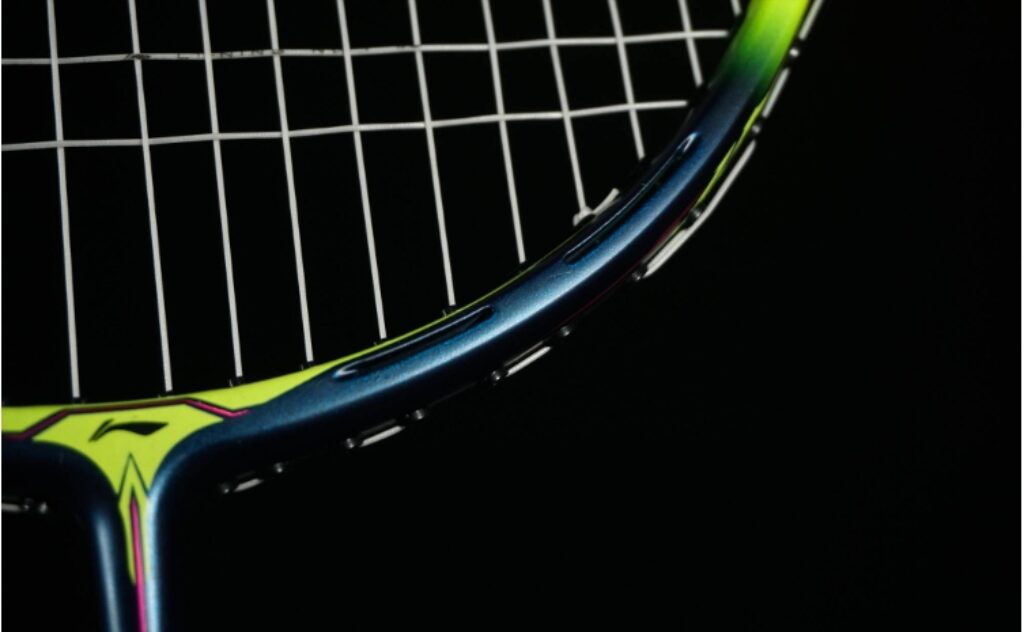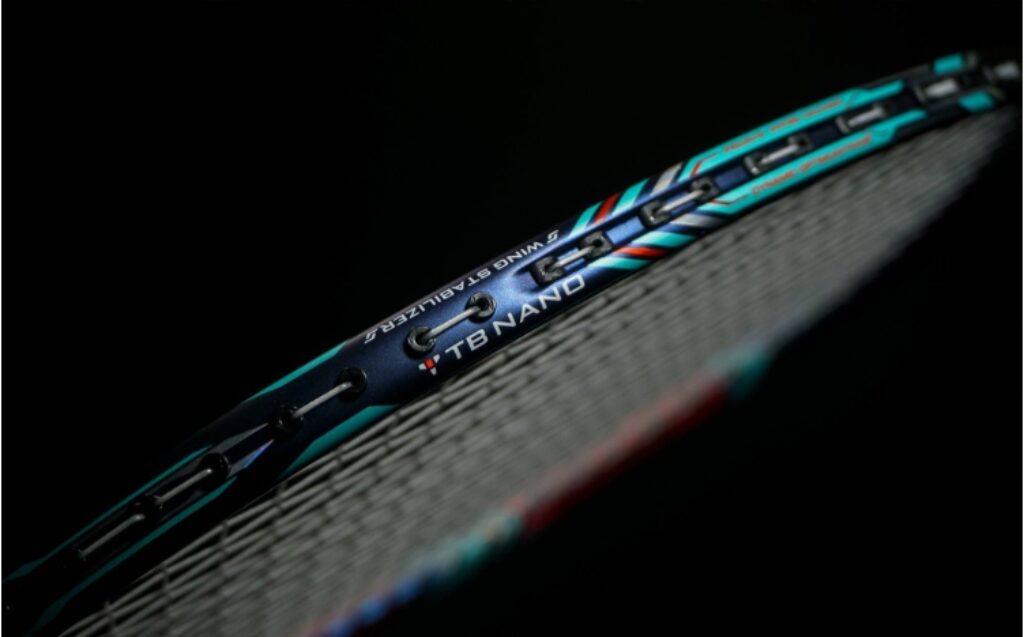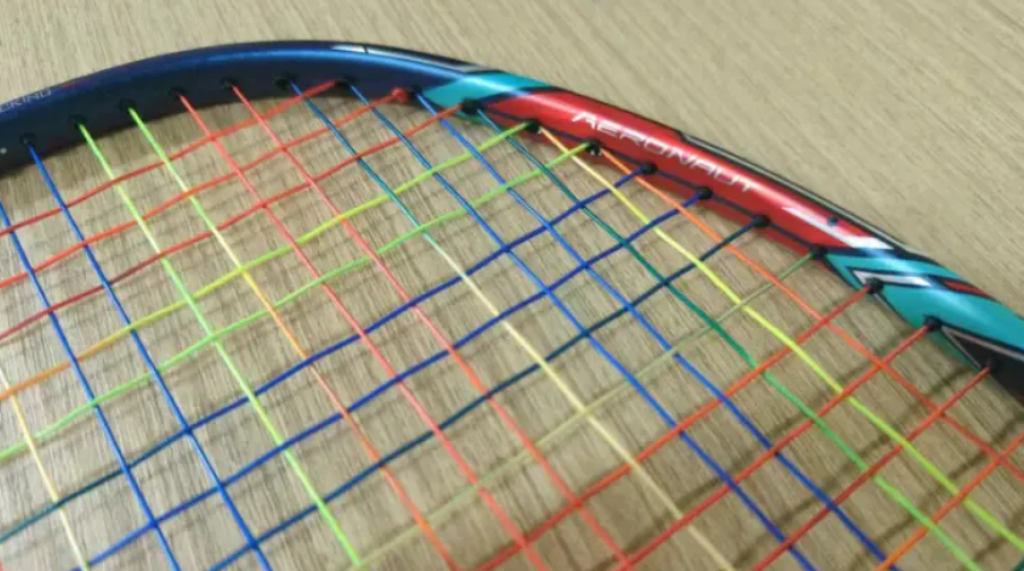As a flagship model from Li-Ning’s mid-generation lineup, it stands out not only for its impressive offensive capabilities within the Wind Storm 9000 series but also for accompanying Zheng Siwei through his remarkable journey. Its popularity and reputation align well with my initial understanding of the racket.
Despite its significant presence and stable price, which has prevented me from completing my trial of it, I have hesitated to borrow it from friends due to its cost and potential inconvenience.

Specifications: 3UG6, without base towel grip, total weight in use 93.86g, balance point 310mm, shaft length 210mm, moderate stiffness, box frame, 72-hole string bed, 9-3 o’clock string groove, warranty up to 32 lbs, strung with 26-28 lbs BS720.
The racket’s visual style is striking, with its color selection—deep blue, azure, and crimson—evoking a strong sense of national style. It reminds me of the carefully restored glaze on ancient artifacts, offering high recognition. Some players have mentioned that this design resembles the style of the AT900T from the past but with a brighter touch, which is indeed outside my area of expertise. However, due to its distinctive look, the racket has unfortunately become a frequent target for counterfeiting.
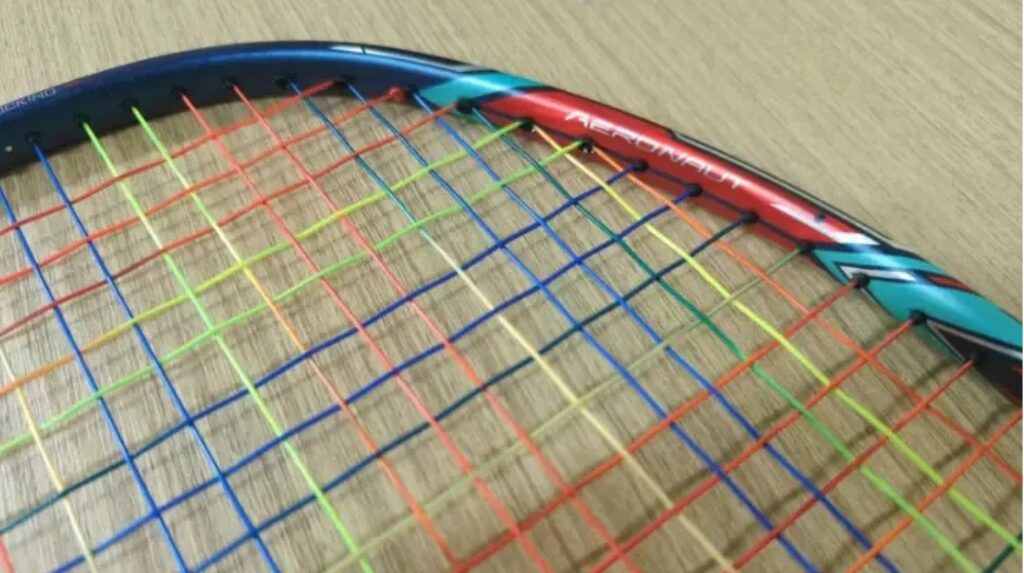
Although it is well-known that this is a 3U offensive-oriented racket, my initial experience with it did not cause much pressure. Undoubtedly, it has a slightly higher swing weight than the 9000, but overall, it still falls within the balanced racket category. If it were reduced to a 4U specification with its current weight distribution, it would not differ significantly from the Tactic 6000 in terms of empty racket feel.
The shaft is not very stiff, and its quality is similar to its counterparts. It offers a clear feel of using leverage when handling active shots and makes it easy to drive and experience the deformation of the 9000C shaft. The feedback from the shot is also similar to the 9000, perhaps even a bit more forgiving, making it quite user-friendly. The current box frame also shows good torsional resistance and performs well in directional control, with good performance in trying to keep long shots within the small corner grid.
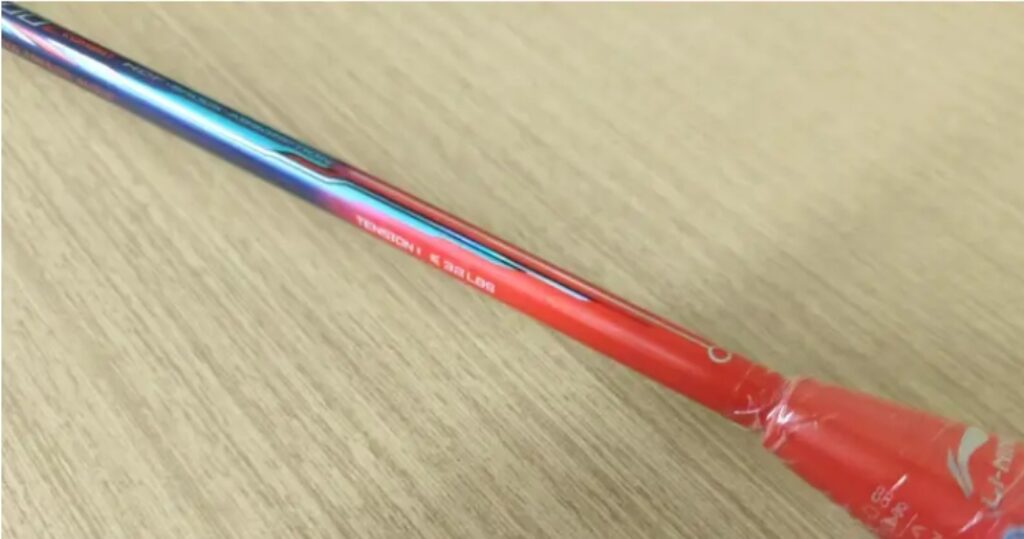
It is said that wind tunnel technology improves swing speed. While previous experiments by Pang Hu have controlled variables, I need not investigate whether the wind tunnel or the box frame with the same projected area is better. At least in doubles play, with the racket in my hands in a mid-to-high state on that day, flat drives and blocks can still create a fast-paced exchange. Although the increased swing weight affects its agility, the longer grip effectively avoids excessive torque.
However, the feel of this racket is not as typical or aggressive. Unlike the current trend of “touch and go,” the 9000C has a more noticeable holding feel. But this is not an excuse; after all, Zheng Siwei has moved from the 9000C to the Double-Edged 10LT and now to the Bow 11P, and with the rumored preference for BG65 strings, it is clear that the racket’s characteristics are mainly to match the user’s preferences rather than specific scenarios.

On the offensive side, the 9000C feels somewhat “conventional.” The racket delivers energy to the shuttlecock through both gravity and elasticity, with little difference in proportions. As one of the best-performing mid-shaft rackets from Li-Ning at the time, its performance now seems slightly outdated. Whether by design or not, among the 9000 series, the Wind Blade is indeed significantly more aggressive than the Wind Storm, providing more confidence in execution.
The 9000C does have a slightly higher pressing feel compared to the 9000. The deformation of the shaft during a powerful smash is not as pronounced as in the 9000, providing more resistance and a feeling of the whip-like motion of the racket head. With harder strings, it should produce a shot power that closely reflects the input force. It is not as difficult to smash with, and both the pressing and power feel reach a certain level of aggressiveness. However, to create absolute threats, it still largely depends on the user and maintaining continuity.
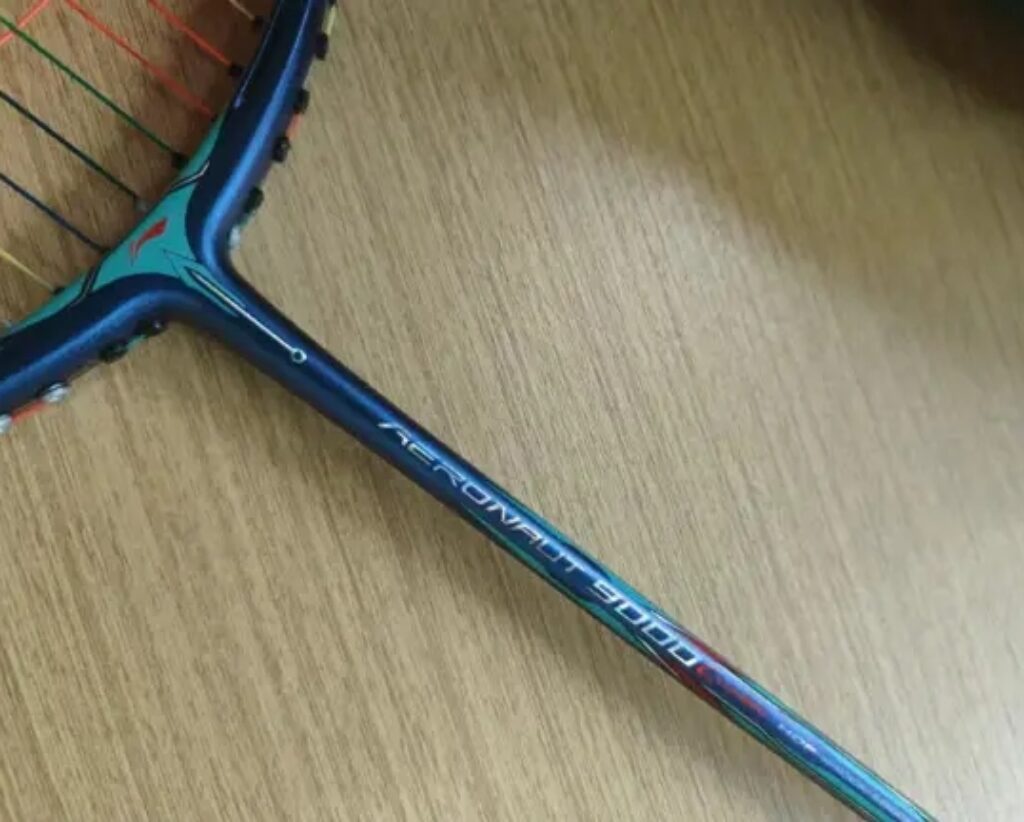
Although it is a C-suffix product, I have not seen any players around me who immediately experienced the heavy-hitting or continuous pressing characteristics after switching to the 9000C. The essence of the 9000C in the market remains a fairly conventional, balanced racket with some offensive features. After using the 4 and 9 versions of the Wind Storm, I personally do not find the 9000C to have extraordinary qualities. Moreover, its series-specific holding feel gives me more confidence in net play and rear court flicks and pushes, leading to a slightly better impression in controlling the rhythm of play.
Based on this understanding, after using all four siblings of the Wind Storm 9000 series, I will probably miss the days spent with the 9000 more.




